Fresh herbs are a gardener’s pride and a cook’s secret weapon. Their aromatic leaves, vibrant colors, and concentrated flavors can elevate dishes from ordinary to extraordinary. However, one common challenge for both gardeners and home cooks is keeping herbs fresh long enough to use them. Without proper storage, even the most carefully grown or freshly purchased herbs can wilt, discolor, or lose their flavor in just a few days.
Fortunately, with the right storage techniques, you can extend the shelf life of your fresh herbs, preserve their aroma and taste, and reduce food waste. This guide explores the best methods for storing fresh herbs, whether you grow them at home, buy them at the market, or harvest them from your garden.
Understanding Herb Storage
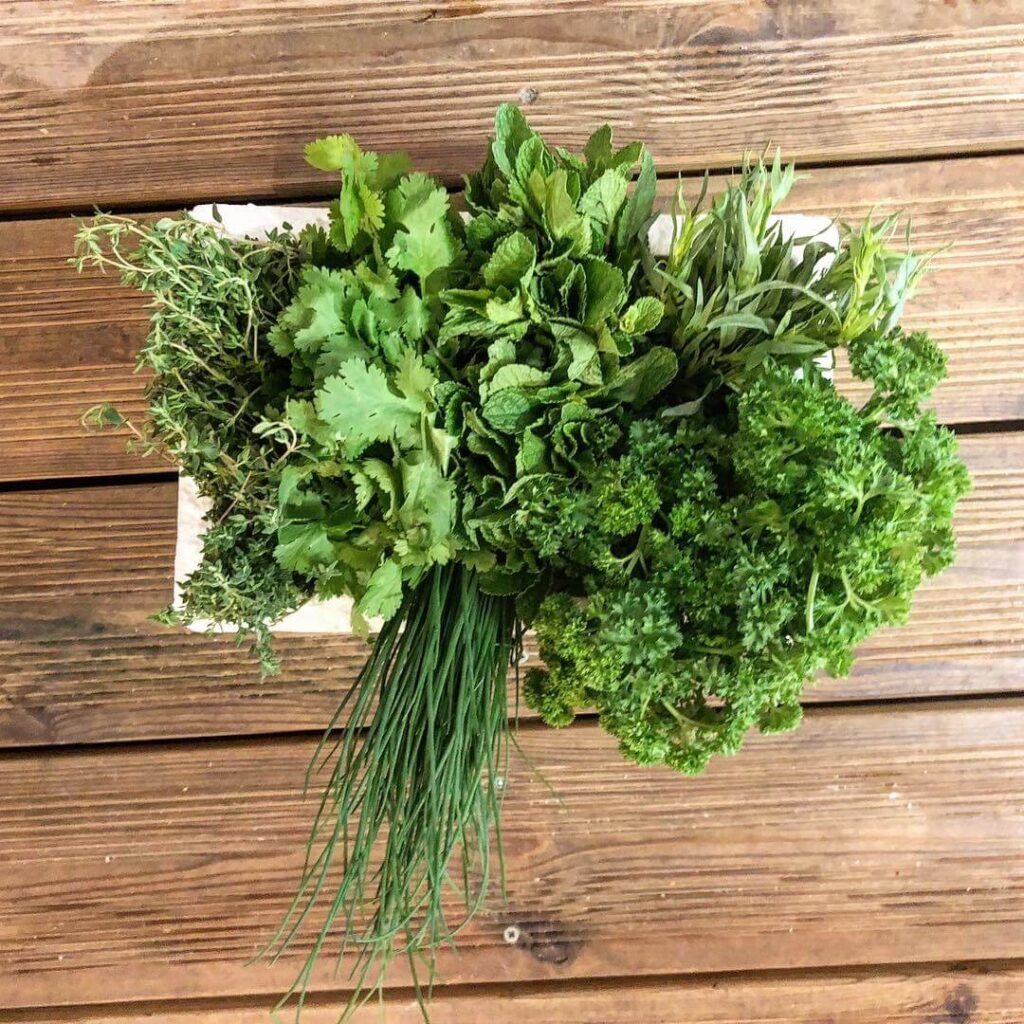
Not all herbs are created equal when it comes to storage. Broadly, herbs can be classified into two categories:
- Tender Herbs: Basil, cilantro, parsley, chives, dill, tarragon. These herbs have soft stems and delicate leaves.
- Woody Herbs: Rosemary, thyme, oregano, sage, mint. These have firm stems and more robust textures.
The storage method depends on the type of herb, as their water content, leaf structure, and oil concentration affect how long they last.
Expert Insight: Understanding the differences between tender and woody herbs ensures you select the most effective storage method for each.
Preparing Herbs for Storage
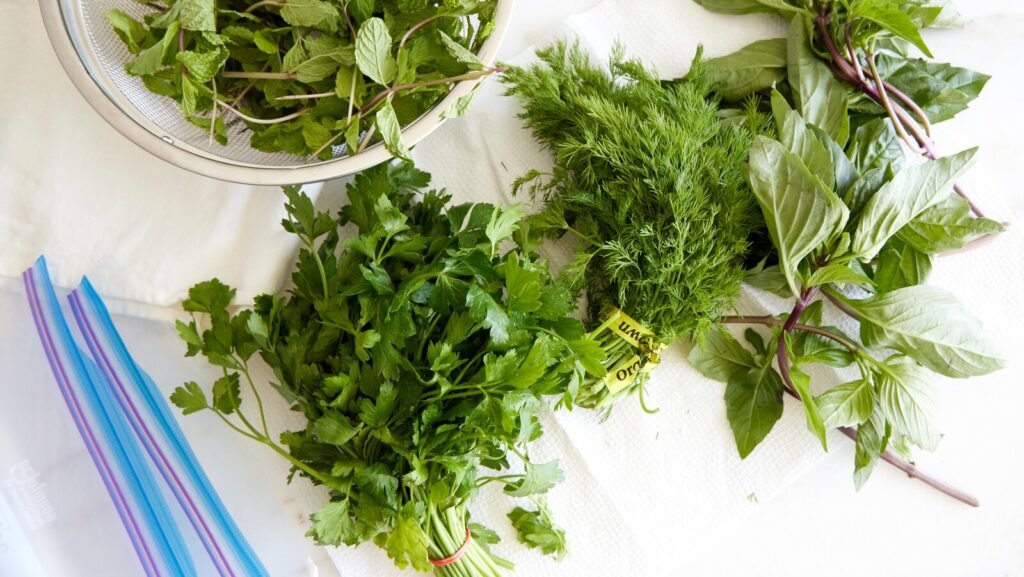
Before storing herbs, proper preparation is essential:
- Harvesting: Pick herbs in the morning after dew has dried but before the heat of the day. This ensures maximum flavor and oil content.
- Cleaning: Gently rinse herbs under cool water to remove dirt and insects. Pat dry with paper towels or use a salad spinner to remove excess moisture.
- Trimming: Cut off any damaged leaves or wilted parts, and trim stems slightly to encourage water absorption if using the water storage method.
Pro Tip: Handle herbs delicately to prevent bruising, which accelerates decay.
Storage Methods for Tender Herbs
Tender herbs are more perishable and require careful handling. Here are the best ways to store them:
1. Refrigeration in Water
- Method: Place herb stems in a small jar or glass of water, like a bouquet. Cover loosely with a plastic bag.
- Best Herbs: Basil, parsley, cilantro, chives, dill.
- Tip: Change the water every 2–3 days to prevent bacterial growth.
- Shelf Life: 7–14 days, depending on the herb.
Extra Tip: Basil prefers room temperature water storage, as refrigeration can turn leaves black.
2. Paper Towel Wrap
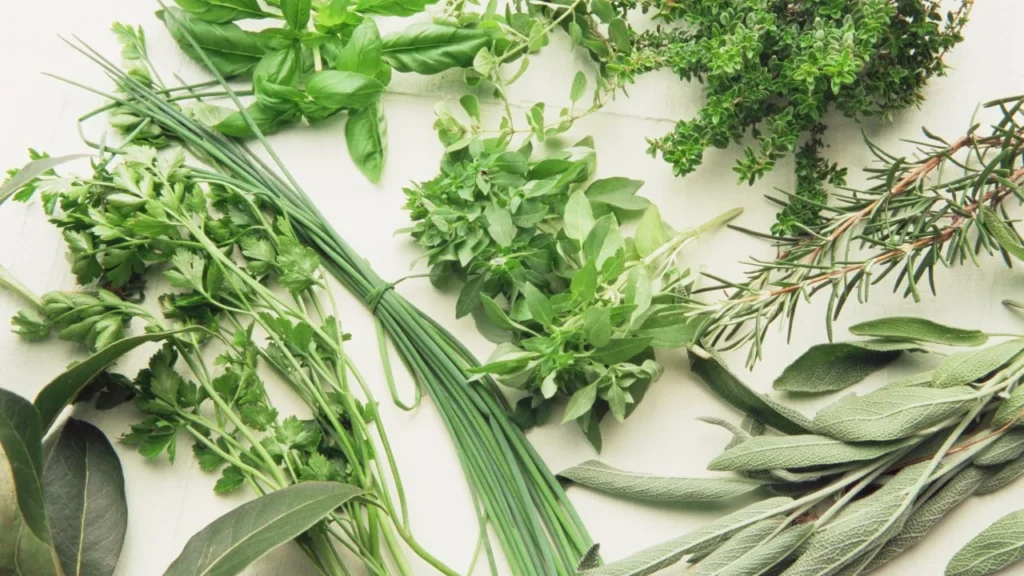
- Method: Wrap herbs in slightly damp paper towels, place them in a resealable plastic bag or container, and store in the fridge.
- Best Herbs: Parsley, cilantro, tarragon, chives.
- Tip: Ensure towels are moist, not soaking wet, to avoid rot.
- Shelf Life: 5–10 days, depending on freshness and moisture control.
3. Freezing
Freezing is ideal for preserving herbs when you don’t plan to use them immediately.
- Method 1: Chop herbs, place them in an ice cube tray, cover with water or olive oil, and freeze. Transfer cubes to a freezer bag.
- Method 2: Lay whole leaves on a parchment-lined tray, freeze individually, then transfer to freezer bags.
- Best Herbs: Basil, parsley, cilantro, dill, chives.
- Shelf Life: 3–6 months while retaining flavor for cooking.
Expert Insight: Freezing works best for cooking, as delicate leaves may lose texture when thawed.
Storage Methods for Woody Herbs
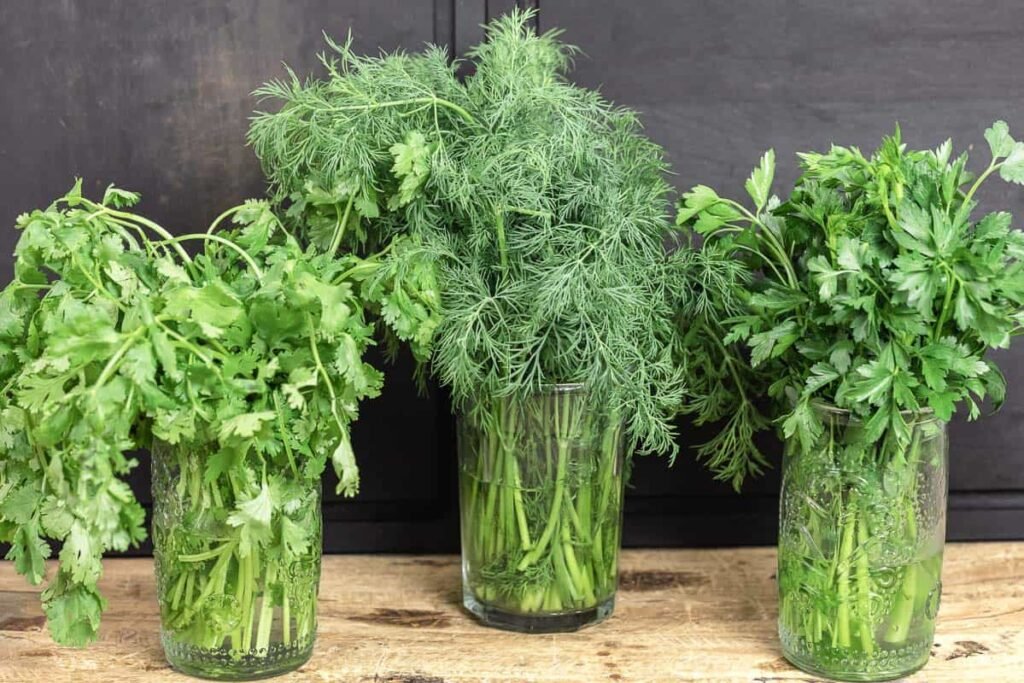
Woody herbs are naturally more durable and can often be stored differently than tender herbs:
1. Refrigeration
- Method: Wrap stems loosely in a damp paper towel and place in a plastic bag or container in the fridge.
- Best Herbs: Rosemary, thyme, oregano, sage.
- Shelf Life: 2–4 weeks due to sturdier leaves and lower water content.
2. Drying
- Method: Bundle stems and hang upside down in a warm, dry, well-ventilated area away from sunlight. Once dried, crumble leaves into airtight containers.
- Tip: Store in dark glass jars to preserve aroma and essential oils.
- Shelf Life: 6–12 months; flavor is best within 6 months.
3. Freezing
- Method: Freeze whole sprigs in single layers on a tray, then transfer to freezer bags.
- Best Herbs: Rosemary, thyme, oregano, sage.
- Shelf Life: 6–12 months; frozen herbs are ideal for cooking directly from the freezer.
Pro Tip: Freezing preserves flavor better than long-term refrigeration for woody herbs, as it prevents leaf wilting and loss of essential oils.
Tips for Maintaining Herb Quality
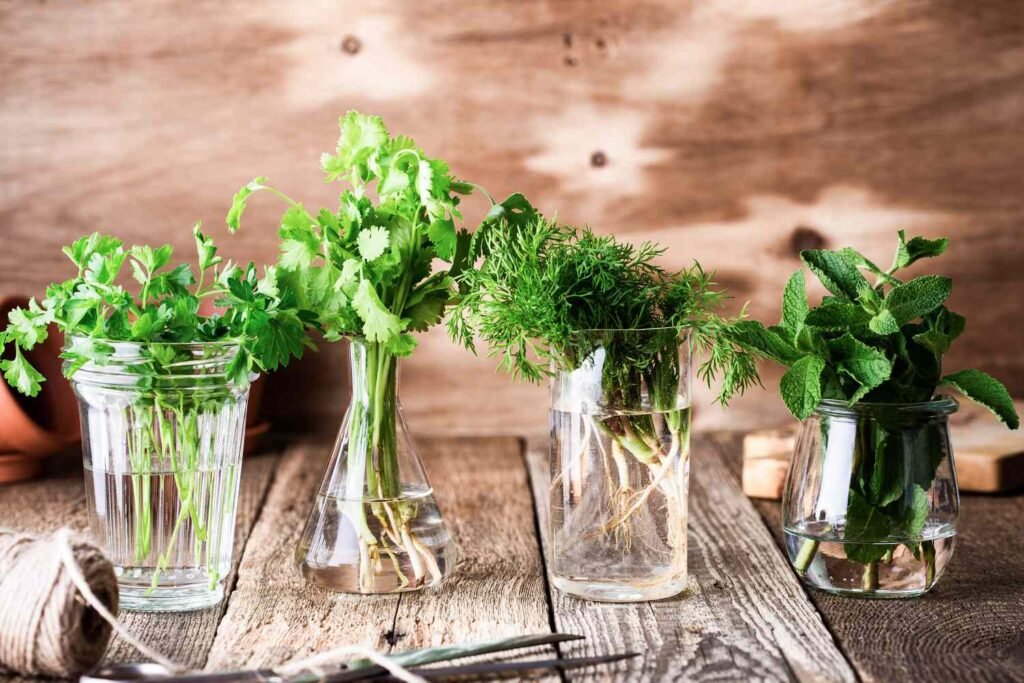
- Avoid Excess Moisture: Too much water encourages mold and rot; too little dries herbs out.
- Limit Air Exposure: Airtight containers slow down oxidation and flavor loss.
- Use Proper Lighting: Keep herbs away from direct sunlight, which accelerates wilting.
- Harvest Gradually: Only remove what you need to maintain freshness of remaining stems.
- Monitor Regularly: Check herbs every few days, discarding any spoiled parts to prevent spread.
Expert Insight: Herbs stored properly can retain vibrant color, aroma, and flavor for much longer than typical grocery store herbs.
Creative Storage Ideas
- Herb Butter or Oil: Blend herbs with butter or olive oil and store in the fridge or freezer. Great for cooking or spreading.
- Vinegar Infusions: Fresh herbs in vinegar preserve flavor and aroma while creating flavorful condiments.
- Herb Salts: Combine chopped herbs with coarse salt and store in jars for seasoning dishes year-round.
- Herb Ice Cubes: Ideal for soups, stews, and sauces; preserves herbs in single-use portions.
These methods extend usability while adding convenience to daily cooking.
Benefits of Proper Herb Storage
- Cost Efficiency: Reduces food waste by extending shelf life.
- Flavor Preservation: Maintains essential oils and aroma for maximum culinary impact.
- Nutritional Value: Fresh herbs retain antioxidants, vitamins, and minerals longer.
- Convenience: Ready-to-use herbs save preparation time in cooking.
- Aesthetic Appeal: Fresh herbs enhance the presentation and appeal of dishes.
Expert Insight: Properly stored herbs can transform ordinary meals into flavorful, aromatic experiences while minimizing waste.
Common Mistakes to Avoid
- Overcrowding: Packing herbs too tightly restricts airflow, causing mold.
- Storing Basil in the Fridge: Basil is sensitive to cold and may turn black; keep at room temperature.
- Ignoring Water Needs: Either too dry or too wet storage reduces longevity.
- Not Cleaning Herbs Properly: Soil and debris can promote spoilage.
- Using Plastic Bags Alone: Direct contact with plastic can trap moisture; combine with paper towels for better results.
By avoiding these mistakes, you can ensure your herbs remain fresh, flavorful, and usable for as long as possible.
Conclusion
Fresh herbs are more than just a garnish—they enhance flavor, nutrition, and aesthetics in countless dishes. However, their delicate nature requires thoughtful storage to maximize longevity. By understanding herb types, choosing the right storage methods, and maintaining proper care, you can enjoy fresh, aromatic herbs for weeks or even months.
Key Takeaways:
- Identify tender versus woody herbs to select the proper storage method.
- Use water jars, damp paper towels, drying, or freezing to extend shelf life.
- Harvest gradually and handle gently to prevent damage.
- Be mindful of moisture, light, and air exposure to maintain quality.
- Explore creative methods like herb butter, ice cubes, or infusions for convenience.
With these strategies, gardeners and home cooks alike can store fresh herbs effectively, minimize waste, and enjoy flavorful, aromatic ingredients all year round. Proper herb storage ensures that every meal benefits from the full taste and aroma of freshly harvested herbs, making cooking a more enjoyable and sustainable experience.
